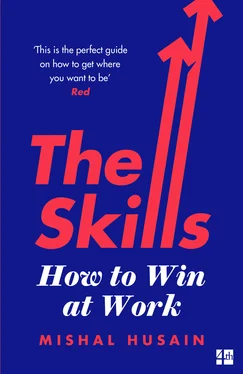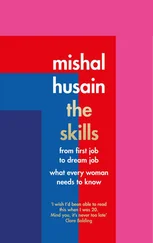She contrasts that with what has happened in the United States with pharmacists, a high-income profession in which women are well represented. In the 1970s the sector was dominated by small independent businesses, with many self-employed pharmacists, but today the majority are employees of large companies or hospitals. Part-time working is common, but pay tends to be perfectly in line with the number of hours worked – those who do fewer hours are paid proportionately less. Goldin attributes this to the ease with which pharmacists are able to substitute for one another – no single person is required to be available for an extended number of hours or for certain hours of the day. ‘The spread of vast information systems and the standardisation of drugs have enhanced their ability to seamlessly hand off clients and be good substitutes for one another. The result is that short and irregular hours are not penalised.’15
Professor Goldin says this structure helps to make it worthwhile for women to stay in paid work rather than leave to care for families, and that other professions could learn from the example of pharmacy. There will still be roles where employees won’t easily be able to swap in for each other – the founder of a business perhaps, or someone with unique and non-replicable expertise – but these should be fewer than is the case at present.
Sometimes internal reward systems are worth re-evaluating, especially if they have been in place for years. When a BBC investigation showed that 95 out of the 100 highest-paid hospital consultants in England were male, bonuses for clinical excellence, accumulating over time, turned out to be a considerable factor.16 One consultant, Mahnaz Hashmi, told me what applying for the bonuses involves: ‘You have to fill out a lengthy form within a short time-frame of a few weeks, showcasing your achievements and providing evidence for them. If you are part-time you will have less to put down. In the early stages it feels like a lot of effort for relatively small bonuses, but they become more valuable as they accumulate over the years.’
This NHS process was based around consultants putting themselves forward. ‘Women seem to do this less,’ she says. It also demanded a lot of the doctor’s own time – for example serving on awards committees, thereby making sure they were up to date with the latest criteria and scoring. ‘It’s difficult to do when you are part-time, and if you come back to full-time you usually find there’s already a wide salary differential between men and women consultants.’ My BBC colleague Nick Triggle says he was struck when working on the data by the self-perpetuating nature of the system. ‘Those working in the NHS told me younger consultants often only go for the awards after prompting from older ones, and there was a sense that senior figures are more likely to do this for those who remind them of their younger selves,’ he says. ‘The culture created, perhaps unconsciously, is one where men encourage other men towards the pay awards.’
In the summer of 2017, my own workplace was the setting for what turned out to be a lengthy row sparked by the BBC disclosing the salaries of the highest-earning on-air ‘talent’ – including presenters, contributors and actors – paid directly from the licence fee.17 The list, which included me, generated intense interest and comment: few people from ethnic minorities were among the ninety-six names, while people who went to private schools were over-represented, compared to the population as a whole.18 Most of the scrutiny, however, was focused on gender – the top seven earners were all male, and in some cases, there was a marked difference between the salaries of women and men appearing on the same programmes. The leading businessman Sir Philip Hampton, chairman of the drugs giant GSK, wondered why women broadcasters had let it happen. ‘How has this arisen at the BBC that these intelligent, high-powered, sometimes formidable women have sat in this situation?’19
The answer is that we didn’t know what the situation was until the disclosure. It sparked unprecedented conversations between colleagues, with women and men starting to share information about their salaries and, in some cases, their efforts to be paid equally to their peers. Some were in pay brackets that put them above the national average, others were not. And we wondered: if the system wasn’t treating women with agency and clout equally to men, what did that say about what might be happening to women elsewhere?
It’s happened even in companies which were sure their ethos would have guarded against any question of unequal pay. In 2015, the chief executive of the tech company Salesforce, Marc Benioff, was approached by his human resources chief about conducting an equal pay audit for its thirty thousand employees. Benioff thought it unnecessary, telling CBS News later that his company had a great culture: ‘We don’t play shenanigans paying people unequally. It’s unheard of.’ Yet he agreed to the audit, which went on to reveal not a few isolated cases but a persistent pay gap between men and women doing the same job. ‘It was through the whole company,’ said Benioff. ‘Every division, every department, every geography.’ Salesforce ended up giving 10 per cent of its female employees pay rises, but when it conducted another audit, the results showed that further adjustments were needed. ‘It turned out we had bought about two dozen companies. And guess what? When you buy a company you also buy its pay practices.’ Benioff concluded that there was a much bigger issue afoot. ‘I think it’s happening everywhere. There’s a cultural phenomenon where women are paid less.’20
Not everyone agrees with that, instead emphasising choice and its implications – for example, women deciding against pursuing time-intensive but financially rewarding career paths.21 But in Iceland, the government is placing a legal obligation on any employer of more than twenty-five people to undertake a similar exercise to Salesforce’s – a comprehensive assessment allowing them to be certified as paying equal wages for work of equal value. The process requires individual jobs to be analysed and scored against a list of criteria, including education required, level of responsibility, how demanding the role is and its value to the employer. The scores across the company or organisation are then compared and any gap between two jobs with the same score but different pay must be addressed. When Iceland’s Directorate of Customs piloted the system, the results included the role of statistics analyst being judged equal to that of a legal adviser, which had previously been higher paid. The statistics analysts were given a rise. The head of human resources, Unnur Kristjánsdóttir, said there was a wider dividend too: ‘We have a happier workforce, knowing that the salary system is something they can trust.’22
The new focus on gender is adding an urgency to questions being asked in many different settings including at two of the world’s top universities. Both Oxford and Cambridge have been puzzling over a gender gap at the highest levels of attainment – first-class degrees in some subjects. In 2014, Cambridge’s results in history showed that in the first part of the degree course, 88 per cent of the firsts went to male students, despite there being near equal numbers of men and women enrolled.23 At Oxford that year, 35 per cent of men but only 21 per cent of women studying English gained a first-class degree and there has been a persistent gender attainment gap in chemistry, too.24
At both universities, all students would have entered with excellent exam grades, and the effort to understand the gaps is made more complex by the range of subjects involved: from the essay-based humanities, where marking is more subjective, to the exactitude required in the sciences. At Oxford, Pro-Vice-Chancellor and Advocate for Diversity Rebecca Surender told me they have been looking at everything from pre-university education to the admissions process, exposure to female role models and the style of teaching, for example the often intense interaction in weekly tutorials. ‘The kind of degree you get matters and we don’t want women to be disadvantaged when they leave us and go into the world,’ she says. ‘Preliminary results suggest that there is no single explanation but rather a set of interactions between wider socialisation and what happens before women get to us, together with some environmental factors in the institution.’
Читать дальше












